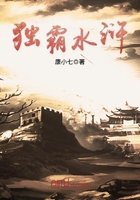This is a book about how rapid economic transformation is, or is not, achieved. It argues that there are three critical interventions that governments can use to speed up economic development. Where these interventions have been employed most effectively in east Asia – in Japan, South Korea, Taiwan and now China – they have produced the quickest progressions from poverty to wealth that the world has seen. When, by contrast, other east Asian states have set off with the same ambitions and equal or better endowments, but have not followed the same policies, they have achieved fast growth for a period but the progress has proved to be unsustainable.
The first intervention – and the most overlooked – is to maximise output from agriculture, which employs the vast majority of people in poor countries. Successful east Asian states have shown that the way to do this is to restructure agriculture as highly labour-intensive household farming – a slightly larger-scale form of gardening. This makes use of all available labour in a poor economy and pushes up yields and output to the highest possible levels, albeit on the basis of tiny gains per person employed. The overall result is an initial productive surplus that primes demand for goods and services.
The second intervention – in many respects, a second 'stage' – is to direct investment and entrepreneurs towards manufacturing. This is because manufacturing industry makes the most effective use of the limited productive skills of the workforce of a developing economy, as workers begin to migrate out of agriculture. Relatively unskilled labourers create value in factories by working with machines that can be easily purchased on the world market. In addition, in east Asia successful governments pioneered new ways to promote accelerated technological upgrading in manufacturing through subsidies that were conditioned on export performance. This combination of subsidy and what I call 'export discipline' took the pace of industrialisation to a level never before seen.
Finally, interventions in the financial sector to focus capital on intensive, small-scale agriculture and on manufacturing development provide the third key to accelerated economic transformation. The state's role is to keep money targeted at a development strategy that produces the fastest possible technological learning, and hence the promise of high future profits, rather than on short-term returns and individual consumption. This tends to pit the state against many businessmen, and also against consumers, who have shorter strategic horizons.
The policy prescription for rapid economic development was confused for a time in east Asia by the presence of other fast-growing economies that did not conform to the pattern of Japan, Korea, Taiwan and China. In the 1980s and early 1990s, the World Bank seized on the performance of the offshore financial centres of Hong Kong and Singapore, and the suddenly faster-growing south-east Asian economies of Indonesia, Malaysia and Thailand, to argue that economic development was in fact fostered by laissez-faire policies, with a minimal role for government. Despite the fact that the offshore centres, with their tiny, dense populations and absence of agricultural sectors to drag on productivity, are not really comparable to regular countries, the World Bank used Hong Kong and Singapore as two of its three 'proving' case studies in a highly controversial 1987 report.[1] After widespread academic criticism of the report, the World Bank followed up with another one in 1993, The East Asian Miracle, which admitted the existence of industrial policy and infant industry protection in some states. But it downplayed the significance of such policies, avoided discussion of agriculture altogether, and added Hong Kong and Singapore to Malaysia, Indonesia and Thailand, thereby leaving Japan, Korea and Taiwan as the statistical minority among its 'High Performing Asian Economies'. (China was omitted from the report.) [2]
This was the ideologically charged era of the so-called Washington Consensus, when the World Bank, the International Monetary Fund and the US Treasury were united in their determination that the free market policies coming into vogue in the US and Britain were appropriate to all economies, no matter what their level of development.[3] The vitriol of the debate was such that academic rigour was frequently a victim, as with the World Bank reports. Indeed, even the academic specialists on Japan, Korea and Taiwan who opposed the Washington Consensus position on economic development made suspect claims in order to bolster their case. This only added to confusion. Chalmers Johnson wrote in the preface to his seminal study of Japanese development, published in 1982: '[The Japanese development model] is being repeated today in newly industrializing states of East Asia – Taiwan and South Korea – and in Singapore and South and Southeast Asian countries.' Alice Amsden, who produced the defining deconstruction of Korean development, referred in the introduction to a follow-up book to 'the model used by Japan, Korea, Taiwan and Thailand'. Even W. W. Rostow, author of one of the earliest and most historically informed post-war books on economic development, The Stages of Economic Growth, declaimed in the foreword to a new edition in 1991 that Malaysia and Thailand were following Korea and Taiwan towards technological maturity.[4] In the argument over east Asia, everyone started to talk beyond their turf in an effort to win the debate.
The disagreement about the nature of economic development was only made possible by continued fast growth rates around the region. In the early 1980s, however, Brazil – the outstanding fast growth story of 1960s' and 1970s' Latin America – had shown how dangerous it is to judge economic progress by growth rates alone. Brazil is the only major economy outside east Asia which has managed to grow by more than 7 per cent a year for more than a quarter of a century.[5] But, with the onset of the Latin American debt crisis in 1982, Brazil crumbled amid currency depreciation, inflation and years of zero growth. It turned out that too much of Brazil's earlier growth had been generated by debt that did not translate into a more genuinely productive and competitive economy.
Beginning in 1997, with seven economies that have expanded at least 7 per cent a year for a quarter century – Japan, Korea, Taiwan, China, Malaysia, Indonesia and Thailand – east Asia entered a period of reckoning of its own, as the Asian financial crisis took hold. By this point Japan had long since become a mature economy that faced a new set of post-developmental structural problems, ones it showed much less capacity to address than the original challenge of becoming rich. Korea, Taiwan and China, however, were still in the developmental catch-up phase. These states were either unaffected by the Asian crisis or recovered quickly from it, and returned to brisk growth and technological progress. But Malaysia, Indonesia and Thailand were knocked completely off course. They suffered currency depreciation, inflation and much reduced growth. It is indicative that today Indonesia and Thailand report GDP per capita of only USD3,000 and USD5,000 respectively, and feature significant levels of poverty, where Korea and Taiwan report GDP per capita around USD20,000. At the end of the Second World War, all these countries were similarly poor. [6]
What the Asian crisis clarified was that a consistent set of government policy interventions had indeed made the difference between long-run success and failure in economic development in east Asia. In Japan, Korea, Taiwan and China, governments radically restructured agriculture after the Second World War, focused their modernisation efforts on manufacturing, and made their financial systems slaves to these two objectives. They thereby changed the structures of their economies in a manner that made it all but impossible to return to an earlier stage of development. In the south-east Asian states – despite their long periods of impressive growth – governments did not fundamentally reorganise agriculture, did not create globally competitive manufacturing firms, and did accept bad advice from already rich countries to open up financial sectors at an early stage. The Japanese economist Yoshihara Kunio had warned in the 1980s that south-east Asian states risked becoming 'technology-less' developing nations. This is exactly what happened, and they slid backwards when their investment funds dried up. In short, different policy choices created – and will probably further widen – a developmental gulf in the Asian region.[7]
The reality of two East Asias
The strategies – agricultural, manufacturing and financial – that determine success and failure were set in train decades before the Asian 'miracle' debate of the 1980s and 1990s took place. It is those strategies that this book explores. It begins with the radical redistribution of agricultural land in Japan, Korea, Taiwan and China in the late 1940s and early 1950s. Land was the biggest political issue in east Asia after the Second World War and promises of land reform were fundamental to the communist victories in China, North Korea and Vietnam. However, in these socialist states, family farming was later substituted, for ideological reasons, by collectivisation, which caused yields to stagnate or fall. In Japan, South Korea and Taiwan, household-based land redistribution programmes were implemented peacefully, and sustained. It was this that led to prolonged rural booms that catalysed overall economic transformation.
In south-east Asia there was also much post-war talk about more equitable land distribution, new agricultural extension services to support farmers and the provision of affordable rural credit. A good many reform programmes were launched. But the actual implemented effects were a fraction of what they were in the north-east of the region. This is where east Asian divergence began. The failure of the leaders of south-east Asian states to get to grips with the problems of agriculture both made development in general much more difficult and presaged other policy failures. It is instructive that sixty years later land is still a major political issue in the Philippines, Indonesia and Thailand, and only less so in Malaysia because the country's natural resource wealth mitigates its poor agricultural performance. Part 1 of this book explores why agriculture is so important. It does so partly through journeys to Japan and the Philippines.
Part 2 moves on to the role of manufacturing. It investigates how Japan, Korea, Taiwan and China perfected ways to marry subsidies and protection for manufacturers – so as to nurture their development – with competition and 'export discipline', which forced them to sell their products internationally and thereby become globally competitive. This overcame the traditional problem with subsidy and protection policies, whereby entrepreneurs pocketed financial incentives but failed to do the hard work of producing competitive products. Firms were not able to hide behind tariff and other barriers and sell only to a protected domestic market because protection, subsidies and credit were conditioned on export growth. Firms that did not meet the export benchmark were cut off from state largesse, forced to merge with more successful companies, or occasionally even bankrupted. Governments thereby ended up with world-beating firms to justify their considerable investments of public funds.
This is the second point at which there has been a sharp divergence of policy in south-east Asia and north-east Asia and China. In south-east Asian nations, leading entrepreneurs were no less capable than those in other countries, but governments failed to constrain them to manufacture and did not subject them to export discipline. Instead, there were state-sector manufacturing projects, but with little competition between firms and no requirement to export. As a result, governments obtained a very low return on all forms of industrial policy investment. In the boom years of the 1980s and 1990s, the failure to generate indigenous manufacturing and technological capacity was hidden by the arrival of high levels of foreign direct investment, much of it concentrated on processing operations within quite advanced manufacturing sectors. With the onset of the Asian crisis, however, the industrial difference between south-east and north-east Asia became starkly apparent. South-east Asia has almost no popularly recognisable, globally competitive manufacturing companies. Singapore's Tiger Beer and Thailand's Singha Beer and Chang Beer are about as close as we can get to widely recognised south-east Asian industrial brands, and these brewers are not really manufacturers at all. Without successful large, branded companies of their own, south-east Asian economies remain technologically dependent on multinationals, eking out a living as contractors for the lower-margin parts of international production chains. The manner in which states did, or did not, become masters of their industrial destinies is explored in part 2 during journeys to Korea and Malaysia, visiting the sites of their respective efforts to learn how to make steel and cars.
Part 3 looks at financial policy. In successful east Asian states, the structure of finance was determined by the need to achieve the objectives of high-yield, small-scale agriculture and the acquisition of manufacturing skills. To this end, financial systems in Japan, Korea, Taiwan and China were kept under close state supervision, and controls on international capital flows were maintained until an advanced stage of development. The main mechanism for making finance support state policy objectives was bank lending, which was manipulated to force export discipline on manufacturers. Firms had to demonstrate export orders in order to secure credit. In a neat circle, export performance also provided signals to banks about whether their loans would eventually be repaid, because exporters were almost by definition better businesses than firms that sold only at home. In order to fund development, interest on bank deposits in north-east Asia and China was set well below market rates, a form of stealth taxation that helped pay for subsidies to agriculture and industry. This encouraged the setting up of illegal deposit-taking institutions; however, these so-called 'kerb' markets never drained money from banks to a point that became destabilising.
In south-east Asia, countries were blessed with high levels of savings in their banking systems just as in north-east Asia. But governments directed the hefty investments this made possible to the wrong ends – to lower-yield, large-scale agriculture, and to companies that were either not focused on manufacturing or only on manufacturing for protected domestic markets. South-east Asian states then made their developmental prospects even worse by following rich country advice to deregulate banking, to open up other financial markets, and to lift capital controls. The same advice had been proffered to Japan, Korea, Taiwan and China in the early stages of their development, but they sensibly resisted for as long as possible. Premature financial deregulation in south-east Asia led to a proliferation of family-business-controlled banks which did nothing to support exportable manufacturing and which indulged in vast amounts of illegal related-party lending. It was a story of banks being captured by narrow, private sector interests whose aims were almost completely unaligned with those of national economic development. The process was one which has also been observed in Latin America and, more recently, in Russia. The detail of how financial liberalisation went wrong in south-east Asia is explored on a journey to Indonesia's capital Jakarta, where a new financial district grew like a mushroom in the run-up to the Asian financial crisis.
The countries covered
I have made a number of simplifications in this book so as not to dilute its central messages and to enable its story to be told (endnotes excepted) in just over 200 pages. One of these involved choosing which east Asian countries to leave out of the narrative. Since the book is about developmental strategies that have achieved a modicum of success, the region's failed states do not appear. North Korea, Laos, Cambodia, Myanmar and Papua New Guinea, all of which are found near the bottom of the United Nations' Human Development Index (HDI) rankings,[8] are not discussed. The reasons for the failure of these states are varied, but one common characteristic leaps out: they are all politically and economically introverted. In varying degrees, these countries are re-learning the old lesson of pre-1978 China, pre-1989 Soviet Union and pre-1991 India: that if a country does not trade and interact with the world, it is all but impossible to get ahead in the development game.
This book also restricts itself to the developmental challenges facing what I would call 'proper countries'. It ignores east Asia's two main offshore financial centres – Hong Kong and Singapore. (A more accurate description of these two is port-offshore financial centres because of their dual role as shipping hubs.) The micro oil state of Brunei and east Asia's traditional gambling centre, Macau, are also left out. As noted, much pointless and deeply misleading debate has been promoted over the years by comparing the development of, say, Hong Kong with that of China, or that of Singapore with Indonesia's. The World Bank has been the prime offender and I aim not to add to the detritus. Offshore centres are not normal states. Around the world, they compete by specialising in trade and financial services while enjoying lower structural overheads than other countries, which have larger, more dispersed populations, and agricultural sectors that drag on productivity.[9] Offshore centres' lower overheads mean that they also have a built-in fiscal advantage. Yet they can never exist in isolation – they are in a strict sense parasitic, because they have to have their host or hosts to feed on.[10]
The island of Taiwan is discussed – in politically incorrect but economically essential fashion – as a standalone state. Despite being recognised by most governments as a province of the People's Republic of China, Taiwan has functioned as an independent political and economic entity since 1949. Before that, the island was a colony of Japan for half a century. With its population of 23 million, Taiwan has a developmental story that is both distinct from that of mainland China, and one which exhibits some striking and underreported policy similarities – reflecting the shared experiences of Kuomintang and Communist politicians and bureaucrats on the mainland in the 1930s and 1940s. The book's structure allows both facets of Taiwan's economic history to be discussed.
The omission of failed states and offshore centres, and the adjustment with respect to Taiwan, means that we are left with nine significant east Asian economies: a north-east Asian group of Japan and its two former colonies, South Korea and Taiwan; a south-east Asian group of Thailand, Malaysia, Indonesia and the Philippines; and China and Vietnam. Vietnam, however, is omitted from this third 'post-communist' group in order to further to simplify the structure of the book. Forgiveness is begged from Vietnamese readers, whose country is no way deemed to have anything more in common with China than a certain structural economic framework that results from its being a gradually reforming communist state.
China, and the question of how different the country's economic development strategy really is from those of Japan, Korea and Taiwan, is mostly dealt with in part 4, which is dedicated to the rise of what is now Asia's largest economy. However, some historical aspects of China's development are addressed earlier, because they can only be fitted into the broader history of east Asian development. The Communist Party of China's land reform campaign and early household farming strategy, followed by its switch to agricultural collectivisation, are dealt with in part 1. The post-1978 agricultural story is picked up again in part 4. China's industrial policy strategy prior to 1949 is dealt with part 2, because it connects directly with Taiwan's later experience via the flight of the Kuomintang and various senior planning officials to the island at the end of the Chinese civil war. Mainland China's separate industrialisation story after 1949 is discussed in part 4. Almost all aspects of China's finance policy story are dealt with in part 4 alone.
In the background
In terms of influences on economic development that are not directly addressed by the policy focus on agriculture, manufacturing and finance in this book, the most important is probably demographics. The size and age profile of a country's population has a huge impact on its developmental potential. Labour is an input into an economy – a form of 'capital' – just like money, and a large working-age population relative to the cohorts of children and retired people increases the possibilities for fast growth. Rapidly declining death rates – particularly for children – and rapidly rising working-age populations have been a big part of the east Asian developmental story since the Second World War. These demographic trends, largely the result of advances in medicine and sanitation, have facilitated unprecedented growth. The phenomenon is sometimes referred to as the 'demographic dividend'. The flip side of this dividend is that it is followed by the faster ageing of populations – by which we really mean the increase of retired people relative to workers. After a tipping point, workforces start to shrink quickly, and older people consume their savings, devouring what were previously funds for investment. Japan's problems since the 1980s have been bound up with acute demographic challenges in an only recently matured industrial economy. In China, the very fast growth of the working-age population that accompanied economic take-off is peaking already, and the country's demographic headwinds will slowly increase this decade.
Demographics are important. However, a certain demographic profile has been part and parcel of the developmental experience of all east Asian states. In this sense the demographic story is a given. The only attempt to manage demographics as an element of economic policy occurred in China, but this has not been a major determinant of that country's performance. Mao Zedong proselytised a baby boom that was already occurring, telling Chinese people there was strength in numbers. Then Deng Xiaoping and his successors put the brakes on the birth rate, which was already slowing, with an often brutally enforced policy to limit child-bearing. Yet despite the misery induced by these Brave New World-style interventions, China's developmental performance has been shaped by the same policy choices in agriculture, manufacturing and finance that have made the difference elsewhere. In the end the size of your working-age population is still less important to your developmental progress than what you do with that population.
The other influence on development that is given only a background role in this book is education. Here, the reason is that the evidence of a positive correlation between total years of education and GDP growth is much weaker than most people imagine.[11] The strongest evidence globally concerns primary schooling, but even with respect to that formative period of education when people learn basic literacy and numeracy skills there are states like South Korea and Taiwan that took off economically with educational capital that was well below average. Fifty-five per cent of Taiwanese were illiterate at the end of the Second World War; the figure was still 45 per cent in 1960. Literacy in South Korea in 1950 was lower than in contemporary Ethiopia. It may be that, more than education leading to economic progress, economic progress leads families to educate their children, which in turn makes more economic progress possible.
In the Philippines, the US colonial government placed great emphasis on investment in schooling in the early twentieth century. Even today the Philippines has the highest level of tertiary-educated students in south-east Asia. But because more important policy choices were flunked, the country is on the cusp of being a failed state. Looking further afield, Cuba has the world's second-highest literacy rate for children over age fifteen, and the sixth highest rate of school enrolment. Education has been a top priority there since the revolution in 1960. Yet the country ranks only ninety-fifth in GDP per capita in the world. Cuba has a surfeit of university graduates and inadequate employment opportunities for them – one reason why 25,000 Cuban physicians undertake state-subsidised work overseas.[12] In the former Soviet Union, too, output of highly trained personnel was never matched by economic development.
There are two, related explanations for the patchy connection between education and economic growth. The one heard about most often is that, from a developmental perspective, there is too much education of the wrong kind. In east Asia there exists a marked contrast between the emphasis on vocational training of secondary and tertiary level students in Japan, Korea, Taiwan and China, versus the less trades-focused education systems of former European and US colonial states in south-east Asia. The engineering qualification of a Taiwanese student may be more appropriate to the initial task of economic advancement than the accountancy qualification of the Malaysian student. By the late 1980s, vocational training (mostly focused on manufacturing) constituted 55 per cent of tertiary education in Taiwan, while less than 10 per cent of students were taking humanities subjects. In the 1980s, relative to population, Taiwan had 70 per cent more engineers than the US.[13] Like Korea and Japan, which established the model in east Asia, the Taiwanese education system came to resemble those of the manu-facturing-based economies of Germany and Italy in Europe. South-east Asian states, in the Anglo-Saxon tradition, placed more emphasis on the humanities and on 'pure science'.
A shortfall of vocational training and engineers, however, cannot be more than a tiny part of the explanation for the laggardly performances of south-east Asian states and others with educational profiles like them. To begin with, in north-east Asia most of the engineers were trained after fast growth took off. The early success of Meiji Japan was achieved with surprisingly few engineers – the country only began to step up its vocational and scientific and technical education in the 1930s.[14] In countries like Cuba and Russia, by contrast, vast numbers of engineers have been churned out without positive results. All this points to the second, and almost certainly more important, reason why data about formal education and development do not jibe well. It is that a lot of critical learning in the most successful developing countries takes place outside the formal education sector. It occurs, instead, inside firms.
This intra-firm learning helps explain the relative failure of the former Soviet Union and its satellites, where investment in education and research was focused on elite universities and state research institutions rather than inside businesses. The situation has been not too dissimilar in south-east Asia, which combined the Anglo-Saxon tradition of elitist tertiary education with a major post-independence expansion of public sector research institutions. In Japan, Korea, Taiwan and post-1978 China, by contrast, a lot of highly effective educational investment and research has been concentrated not in the formal education sector but within companies, and by definition – unlike the Soviet situation – within companies that are competing internationally. This may be critical to the rapid acquisition of technological capacity. As the Japanese scholar Masayuki Kondo put it when describing Malaysia's failure to develop indigenous technological capacity despite a lot of investment in higher education and research: 'The main context for industrial technology development is firms, not public institutions.' [15] Technology policy, not science policy, is the key to the early stages of industrial development. As a result, a government's industrial strategy is the most powerful determinant of success. If a state does not force the creation of firms that can be the vehicles for industrial learning – and then nurture them – all efforts at formal education may go to waste. The only caveat is that once a country reaches the 'technological frontier' in manufacturing, its optimal educational mix –and the relationship between institutions of formal education and learning within firms – changes. But that is not the focus of this book. Here we are concerned with what gets you into the rich man's club in the first place.
Not part of the package
Demographics and 'learning', then, are woven into the fabric of this book as and when necessary and appropriate. Three other considerations which are frequently deemed to affect economic development, however, are left out.
The first is political pluralism and democracy. There are those who try to construct a compelling case that democracy either prevents – or makes possible – economic development. It is hard to see any very clear pattern in east Asia. At a national level, nineteenth-century Japan followed a slow but steady course towards a more democratic political structure and an increasing franchise, and initiated the region's first – and, until the Second World War, sole – successful modernisation programme. Only during the global depression of the 1920s, and under considerable racist pressure from the 'white' powers, did the political system descend into chaos and, later, military dictatorship. In South Korea and Taiwan, by contrast, many people point to the authoritarian success of generals Park Chung Hee and Chiang Kai-shek respectively. But they conveniently forget the authoritarian disaster of Chiang Kai-shek in mainland China before 1949 under a different set of economic policies. In south-east Asia, in Indonesia after the Second World War, Sukarno ran a chaotic democratic administration before switching to authoritarian 'guided democracy' with even more chaos. Suharto took over in a military coup, and brought greater stability and development under authoritarianism, but his family ended up plundering the country. In the Philippines, a democratically elected Ferdinand Marcos announced in 1972 that he needed martial law in order to make vital reforms that would expedite development, and then went on to set a new standard of plunder.
At a micro, sub-national level it is equally difficult to find a consistent correlation between either authoritarianism or democracy on the one hand, and policies required to promote economic development on the other. There are moments, as with General Park Chung Hee's temporary imprisonment of business leaders and re-nationalisation of the Korean banking system in 1961, when actions of an extremely authoritarian nature have produced clear dividends. But there are also policy interventions where a democratic approach has been essential. In communist-controlled areas of China in the mid and late 1940s, the success of land reform was bound up with elected village committees whose functioning was in stark contrast to the authoritarianism we associate with China today. Likewise, the representative – usually elected – land reform committees employed in Japan and Taiwan were vital to their unprecedented success.[16] South Korea's more centralised, authoritarian land reform was less effective. And in south-east Asia an absence of democratic process was a hallmark of the abject failure of land reform attempts by states in that region. Democracy and authoritarianism, in sum, have not been consistent explanatory variables of economic development in east Asia.
Perhaps most important, it is hard to ignore the reasoning – associated with, among others, the Indian Nobel Prize-winning economist Amartya Sen – that the question of whether democracy encourages or retards development is based on a false distinction. Democracy and institutional development are part of development and so are not to be judged as drivers of it. After living in China and Italy – states where institutional development has trailed economic development with a considerable lag – I believe this not only intellectually but based on twenty years of personal experience. The miseries visited on ordinary people by a lack of attention to institutional progress deserve attention in their own right. Economic development is the subject of this book, but economic development alone is not a recipe for human happiness.
Another lately fashionable institution – 'rule of law' – belongs in the same category as democracy in being a part of development rather than a prerequisite of economic progress. In recent years Western governments and academics – British and American, in particular – have tried desperately to persuade the Communist Party of China that rule of law is a critical requirement of economic development. They have not been successful in this, mainly because evidence for the argument in east Asia has been distinctly mixed – and China has been the source of much of the negative evidence. As the Chinese economy developed after 1978, its government left questions of property rights deliberately opaque, and gave legal sanction to many activities only after they occurred. The outcomes of important legal cases continue to be decided in advance by Political and Legal Affairs Committees of the Communist Party. Yet China has boomed. In South Korea, the courts, the police and the secret police did the bidding of big business in intimidating, beating and imprisoning union leaders and other labour activists into the 1990s (not wholly different, it must be said, from what happened in the late nineteenth century in the United States or, a little earlier, in Britain). On the other hand, there have been somewhat better legal protections in Japan, which is the region's greatest economic success story. And in the Philippines and Indonesia, where court verdicts often go to the highest bidder, an absence of rule of law has been associated with weaker economic performance. As with democracy, it is better to admit that the rule of law is not a principal driver of economic development, but rather is an integral part of overall development. We should expect developing countries to pursue both.
Finally, there is the old chestnut that geography and climate are major determinants of economic development. There is no shortage of people who believe that geographical south-east Asia is relatively backward simply because it is 'too hot' or that north-east Asia is in the vanguard because, like northern Europe, it enjoys a temperate climate. Confronted with such prejudices I find myself imagining a bar-room commentator in the early eighth century who, noting that the Arab ascendancy of that era was based in what is today Iraq and north Africa, and that the magnificent Tang dynasty operated out of boiling hot Xi'an, announced that Europeans, north Americans, Japanese and Koreans would always be backward because their climates were too cold. The case for geography and climate as key drivers of economic development is given little succour by what follows. Despite a very real tendency of countries to copy their neighbours, geography fits sufficiently poorly with economic success and failure in east Asia that it has had to be treated with considerable licence in this book. Taiwan, which is a three-and-a-half hour flight south of Tokyo, enjoys a subtropical climate, but is placed in this book's north-east Asia group. Equally, Vietnam is geographically just as much south-east Asian as Thailand or Malaysia, but I would group it with China. It is only the very loose geographic economic convergence of two different parts of east Asia that allows believers in geographic pre-destination to argue that there is 'nothing to be done'.
This book indicates that there is plenty to be done. It focuses down on the three areas of policy choice where political decisions make the biggest difference to developmental outcomes. What follows is not a set of detailed policy recommendations because the conditions of each country vary. But it does claim a degree of historical accuracy in describing what happened in east Asia. That history reminds us that, however fleetingly, the developmental destiny of a nation is in its government's hands.















